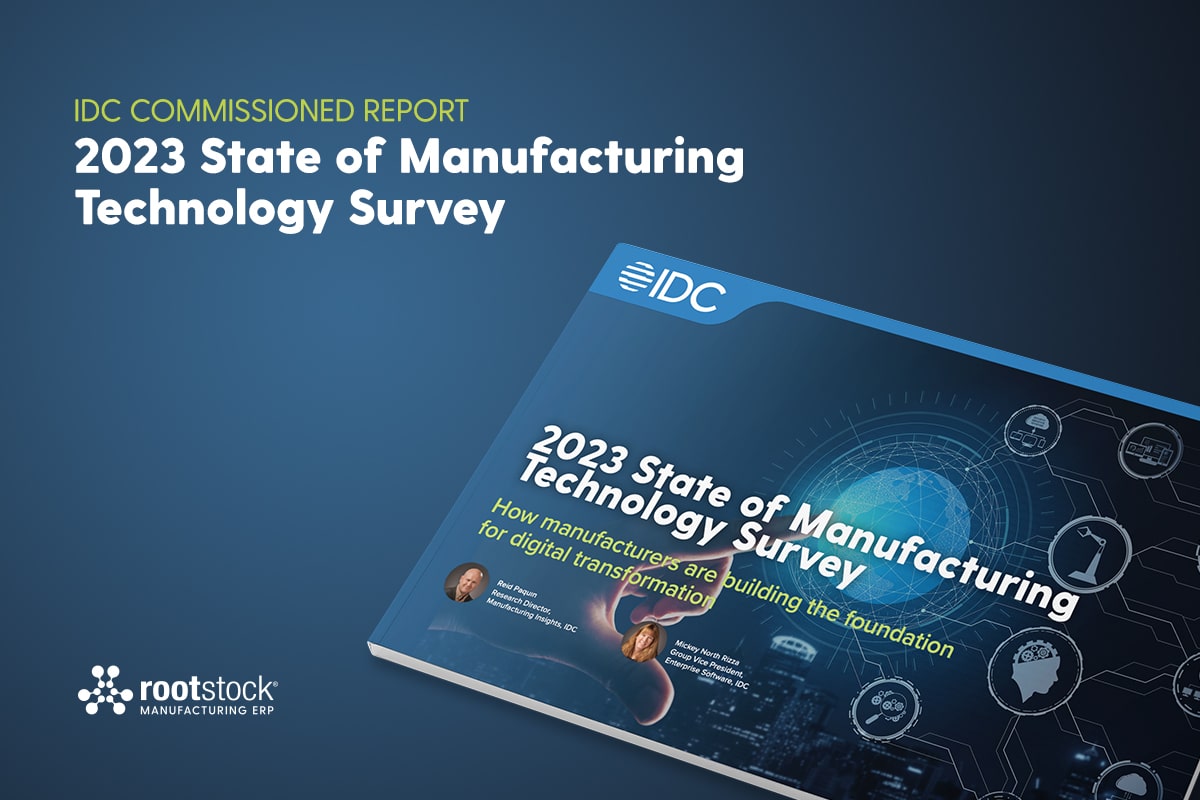
Recently, Peter Wong, Senior Professional Services Director at Rootstock Software, laid out the five basic fundamentals for achieving a successful cloud ERP implementation on a Podcast with Stephen Brooks of Enterprise Times. Peter has more than 25 years of professional service experience and shares these important insights.
Breaking down the details of achieving success with Cloud ERP implementation
1) Start with a clear vision
According to Peter, it’s important to understand the “why” of your project.
What are the value drivers and project vision for the ERP implementation? It starts with the business vision. Senior management needs to clearly articulate, and document, the vision for the outcome, and how they will define implementation success and perceive value. Is the company preparing for growth? Is there a need to drive speed, efficiency, or communication through the organization because of increased competition? How does this project map to your business strategy?
Because businesses are constantly changing, you need to really revisit where you are today and where you need to be. It’s a great time to evaluate your enterprise processes, so you can redesign or streamline, not just automate old processes.
Peter notes, “At Rootstock, we find that customers are used to doing things a certain way, so we ask them to take a fresh look at what are they trying to accomplish. We help them step back and look at their objectives for each function. It takes a little bit of effort, but it’s worth it in the long run.”
When the company aligns on a project vision that supports the business value drivers, it will help to define both long-term and short-term objectives.
2) Create specific objectives and understand the scope
Once you have documented the vision for the project, it’s time to set the project scope and objectives. What will you accomplish in a given timeframe?
In the Podcast, Peter emphasizes, “The next step is to really have clarity in terms of the scope of the project. And we need to be absolutely clear with the whole project team in terms of what is the scope? And how do we want to possibly break up the project into phases? Because we find that too many times, people try and do too much at the same time.”
Next, identify the objectives. Long-term objectives are about the process changes, like the ability to add new product lines more quickly to enable growth. Short-term objectives address more specific tasks, like reducing key strokes for entering new sales or purchase orders.
Peter advises to break the objectives you’ve identified into phases. Walk before you run. By implementing in phases, you can kick-off each phase, measure your success in increments, and not get discouraged by a long process.
It’s very natural to want to get everything up and running right away; order to cash, procure to pay, planning, forecasting, even EDI. Get the foundational pieces in place, the mission-critical components first; what Peter refers to as the “MVP” – Minimal Viable Product. Get your MVP in phase one, then look to the more complex processes and integrations in phase two. By planning for a phased implementation up front, you know whatever you do in phase one, will be a strong foundation for the next phase.
Remember, this is a journey towards the larger company vision. How will you measure success? ERP rollouts can get very broad, and in the end, there is a lot of potential return (ROI) that a powerful enterprise ERP system can deliver. But, be sure to measure the impact you expect in each phase. Celebrate each success: moving away from spreadsheets; speeding up a process; or finishing a global rollout.
3) Identify a project sponsor & manager to work with a dedicated project team
The core project team should consist of business process owners for each functional area. This can include order management, order fulfillment, finance and accounting, and IT.
“Those are key members of the core project team that we typically recommend,” says Peter. “They are very critical in terms of being part of the whole implementation, all the way from beginning, to the go-live. We see them as the key stakeholders that will continue being the champions for their functional areas and the use of the applications.”
It’s also important to have champion key business process owners, who can work across departments. For example, for the order to cash process, the champion has to be able to span sales operation and finance.
Peter identifies two other key roles; the Project Manager and the Project Sponsor.
The Project Manager leads the project team. They have overall responsibility for moving the project along with the team and the implementation partner. They will track the objectives, report on progress, help address obstacles along the way, and drive the project to completion.
The Project Sponsor plays an important role in a successful ERP implementation. It is their responsibility to make sure the vision is executed and that the project stays aligned with that vision. They can set the tone for the project team, as well as the rest of the company. The team, or the manager, needs to have a cadence of how and when to update the sponsor. The sponsor can also help move a decision along, if something gets stalled. The Project Sponsor may be the COO in a larger company, or the CEO in a smaller company. This person will also be instrumental in helping to drive change management.
External stakeholders are another important part of the project team. The right implementation partner can save a lot of time and headache. Experienced professionals can bring guidance, best practices and a fresh perspective on business processes. They can also help keep a project on-time and on-budget. The other thing to look for is someone that can become a long-term partner for this journey. Unlike traditional ERP systems, Cloud ERP Software allows companies to have more flexibility and allow you to continually innovate and improve. As business requirements change, you will likely go back to the partner for guidance and advice in terms of best practices and technologies to help manage that change.
Finally, some ERP implementation teams may include customers and/or suppliers as part of the team, or a source for input at some point. For instance, if you are extending ERP capabilities to a customer to let them place their own orders or view the status of orders, you will want their perspective. Likewise, if you are trying to reduce the friction in your supply chain, you’ll want to involve partners to make sure the processes flow correctly from end to end.
If customer service or tighter relationships with suppliers are important to your business, be sure to include these external stakeholders on your team.
4) Begin change management early with good communication and training
User adoption is driven by successful change management strategies.
There is a reason that you must document the project vision, scope and objectives early in the process. They will be the keys to successful change management within the organization.
“Change management is a big aspect of any ERP implementation,” says Peter. “Customers need to be ready for change too.” Some ERP systems have been in place for years, and it’s easy to get stuck in the same way of doing things. Part of a successful cloud ERP implementation is to rethink and create new processes; there is bound to be some resistance. The goal of change management, good communication and training, is to mitigate that resistance.
A critical part of any project is the team communication. According to Peter, “It starts with communicating clearly when we kick off a project: What are our objectives? What are our timelines? What is the scope of the project? It starts from the very beginning, and it continues throughout the project, and it’s a continuous updating of the team, in terms of where things are if there are any major roadblocks. How is it being handled, and how is it being resolved? That is a key part of any project.”
Training also starts early. The project team needs initial training on the system and terminology to help define business processes. Basic system training can often be done via video. A more focused training takes place in the middle of the project to give them a deeper understanding of functionality. The ideal situation is to enable train-the-trainer with in-house experts to train and enable end-users.
Training isn’t only for the ERP application. End-users need to be trained on how to use the application, combined with how the business processes are changing. If the project team has been communicating consistently, users should be ready for change.
5) Take ownership of the cloud ERP system early in the journey
While it’s important to work with an experienced implementation partner, you need to take ownership of your ERP system. “It’s your journey, don’t leave it all to the consultant,” says Peter. Ultimately you have to live with the system and processes. When you own it, it allows you to power through change management issues too. The sooner you start taking ownership of the system, the happier you are going to be.
To hear more from Peter Wong, listen to the Podcast here.
If you embrace these 5 fundamentals:
- Start with a clear vision
- Create specific objectives and understand the scope
- Identify a project sponsor and manager to work with a dedicated project team
- Begin change management early with good communication and training
- Take ownership of the ERP system early in the journey
…you can count on a successful Cloud ERP implementation.
For more on achieving success for you and your team, download the the Cloud ERP Implementation Guide.
Rootstock Software develops and implements cloud Enterprise Resource Planning (ERP) software that helps manufacturers and distributors deliver personalized customer experiences, build operations that scale and out-service their competition. Rootstock Cloud ERP lets organizations take a more customer-centric view of operations across a robust suite of modules, including Order Management, Manufacturing Operations, Supply Chain and Financial Management. When combined with Salesforce CRM on the Salesforce Platform, companies gain complete visibility to their entire organization and customers. Let Rootstock’s cloud ERP experts help migrate your company off legacy ERP today.







